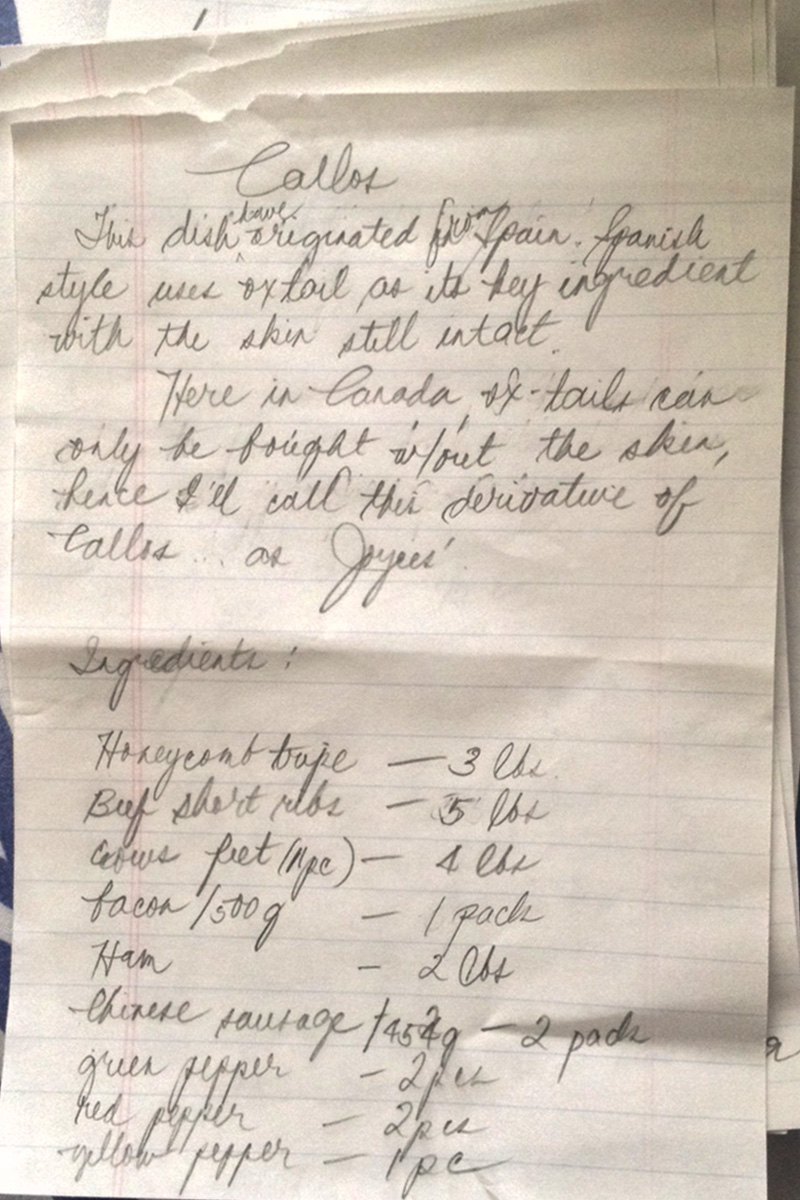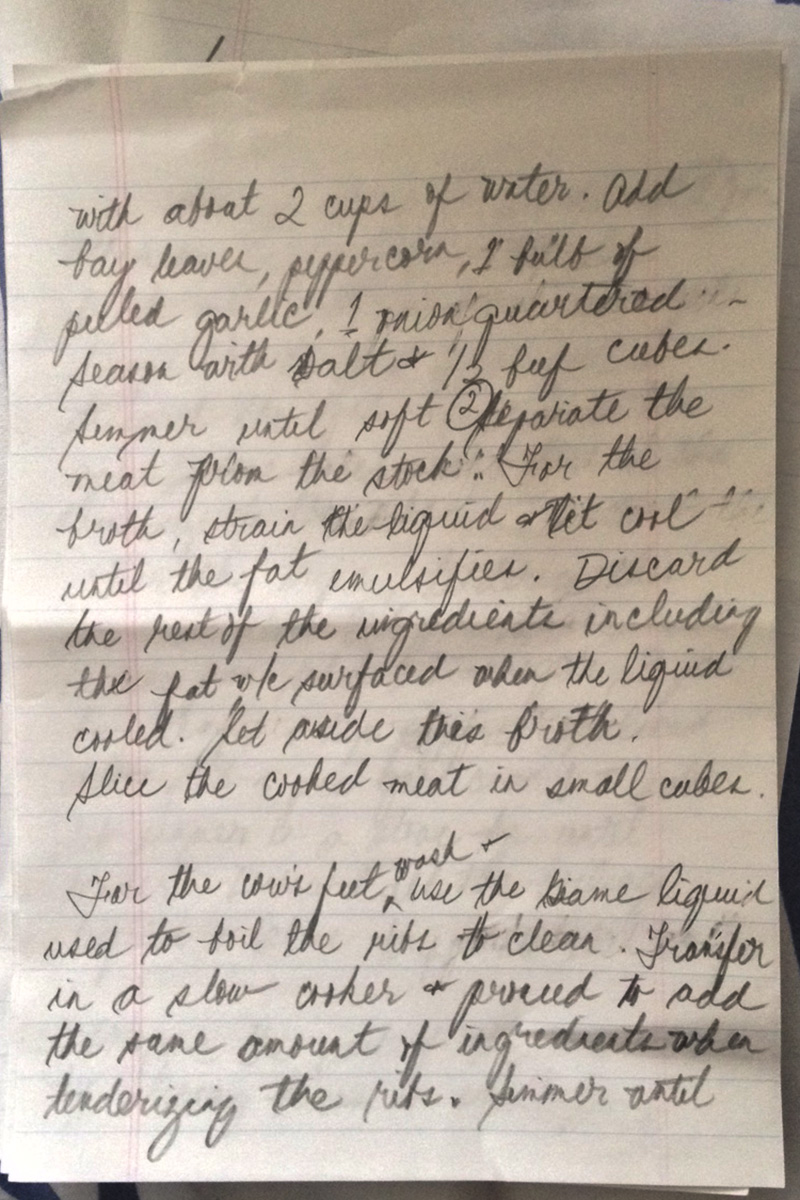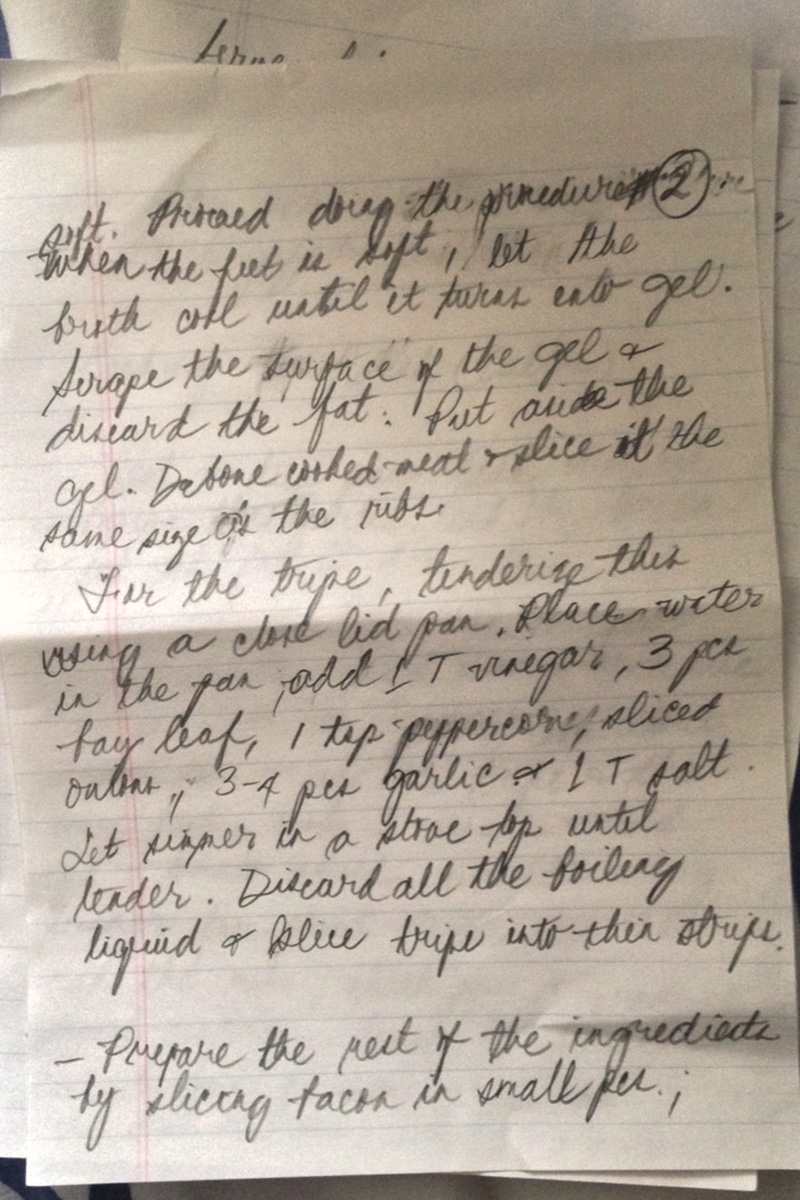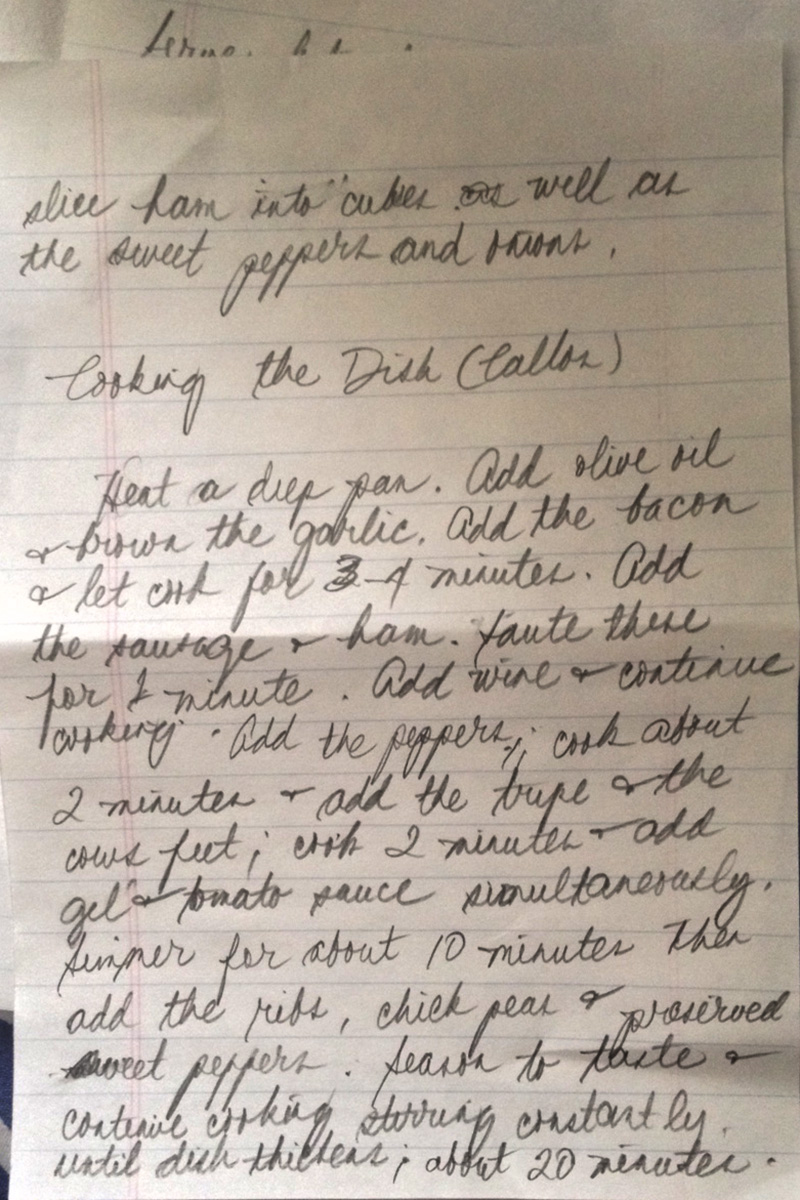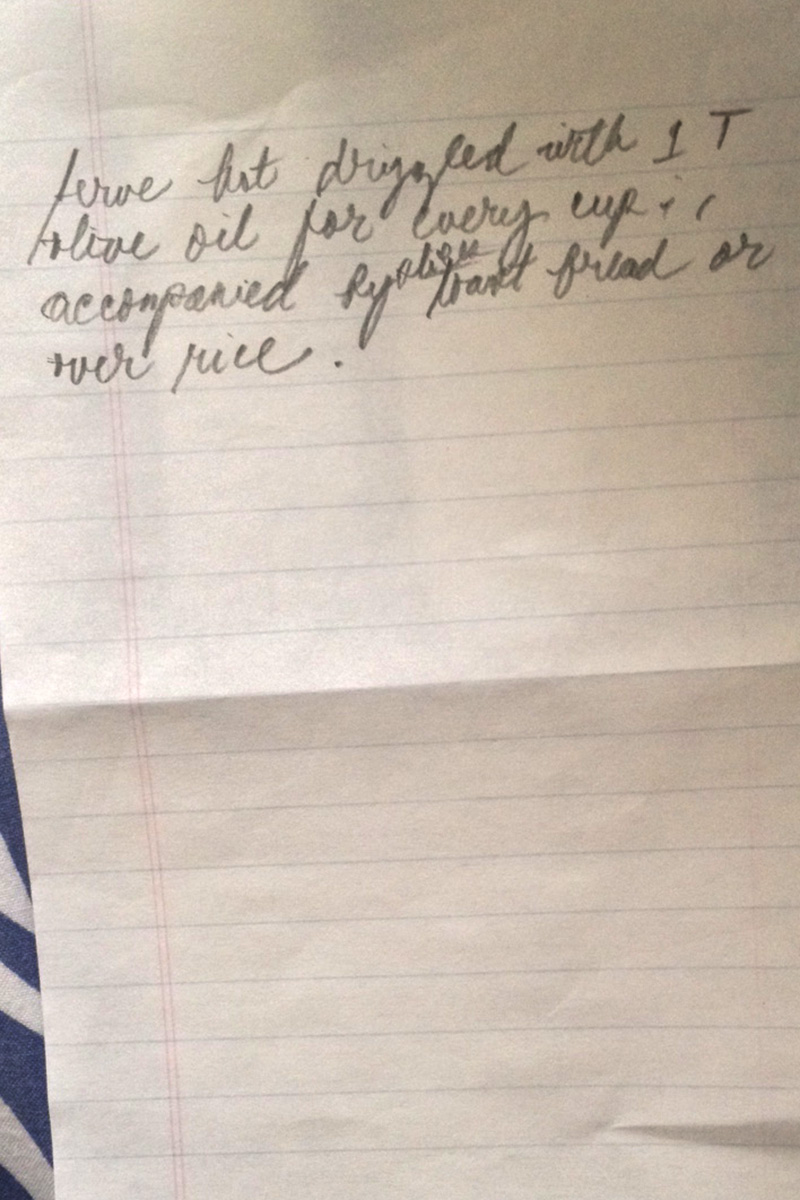This post will mark the start of a new bi-monthly series on dishes that remind us of home. Les Recettes de Ma Mère (My Mother's Recipes) will take a look at some of the dishes we have grown up with, with special emphasis on the multicultural culinary landscape Vancouver has, and how each of these cultures' dishes has defined 'comfort' and 'home'.
-
Callos a la Madrileña (cal-yos a la ma-dri-le-nya) is a tripe stew, and its origins stem from Madrid. The Filipinos have adopted this dish, among many other Spanish dishes, largely because the country was colonized by the Spanish in the mid-1500's, and remained under the Spanish rule until the late 1800's. Spain has left more than just cultural traces in the Philippine culinary landscape, and while, admittedly, Filipino cuisine is difficult to describe, much of the country's cuisine is European by nature.
My mother takes an entire day (or two) to prep for this stew. I remember the smell of tripe tenderizing; that is usually what she tackles first, and it is not a very pleasant smell. The sauté of aromatics that come after the meaty-fatty mise-en-place - that sweet-char smell that emanates from the bell peppers, the onions, and the garlic hitting the hot oil - are what I look forward to smelling the most when she prepares this family favourite. When the dish is finally ready to eat, I serve myself a generous portion, but I usually pick off the tripe from my dish. I was never a fan of the texture, but the use of tripe really lends itself to the richness and the resulting tomato-smoke-umami of the stew.
This version is a tripe-less version, and is much easier to prepare for the curious home cook who wants to try something different, but has not the wherewithal to acquire premium ox tripe and ox legs, nor the time and patience it takes to go look for a great butcher who will source a decent product for you. That is me, in a nutshell. I work more than 40 hours a week, I have allowed myself a small food budget, and I hardly ever have time to cook for my self these days, much less take two whole days to prepare this classic Spanish-Filipino stew. So when I was presented with this assignment, I racked my brain for two whole days trying to figure out how to replicate the classic flavours of callos without having to deal with the smell of tripe and the costs it takes to make the stew. I pored over my mom's messy handwriting for her callos recipe, dug deep into my memory banks for the flavours that stood out for me, and, by golly... I think I've done it! I know I've done it - because the proof, as they say, is in the pudding (or stew, in this case). Sorry, mom! My version is just as good, I swear!
Callos a la Madrileña (Filipino-style)
Preparation time: 4 hours | Serves 8-10
Ingredients
1 can chickpeas
2 cans peeled, whole tomatoes
4 sweet bell peppers (2 red, 1 green, 1 yellow), cut into large chunks
2 medium Spanish onions, cut into large chunks
4 cloves of garlic, finely minced
1 tbsp. Mexican oregano
1 tsp. dried thyme
500 grams beef stew meat
300 grams applewood-smoked bacon, diced
2 to 4 cured chorizo de Bilbao (or any cured sweet Spanish or Portuguese-style chorizo), sliced into coins
1 organic beef bouillon cube
3 cups water
3 bay leaves
4 to 5 pieces dried chile de arbol
2 chili peppers in adobo sauce, finely chopped with about 2 tbsp. reserved adobo sauce
2 tbsp. sweet smoked paprika
1 tbsp. brown sugar
2 tbsp. olive oil
Mise-en-place
1) Chop the vegetables and set aside.
2) Drain the liquid off of the can of chickpeas and set aside.
3) Set the dried aromatics, spices, and seasoning aside: dried thyme, Mexican oregano, bay leaves, chile de arbol, organic bouillon cube.
4) Dice bacon and slice the cured sausage.
Directions
1) Preheat your oven to 350C.
2) In a Dutch oven or deep skillet, heat olive oil. Gently fry the bacon until nice and crisp. Drain with a slotted spoon and set aside.
3) Fry the sliced chorizo in the bacon fat until the edges are slightly crisp. Drain with a slotted spoon and set aside.
4) Brown the beef stew meat until outer exterior is nicely caramelized. Set aside.
5) Pour away any excess bacon fat, but leave some for the vegetables to sauté in. Sauté the peppers and onions in the pork fat until slightly softened. Add the garlic, Mexican oregano, and dried thyme and continue to sauté until garlic has sufficiently browned and has imparted its garlicky aroma. Take the vegetables out and set them aside for later.
6) In the same dutch oven, add the browned beef and the chorizo and cover with three cups of water and the two cans of peeled, whole tomatoes. Crush the tomatoes with your wooden spoon. Add the beef bouillon cube, the chile de arbol, and the bay leaves and make sure to scrape any excess brown bits off of the bottom of the pan. Add the brown sugar, paprika, and the adobo peppers and let it dissolve into the liquid. Put to a gentle simmer before turning off the heat and place inside your preheated oven.
4) Leave the stew inside the oven for two hours. After two hours, add the chickpeas, and leave the stew inside the oven for another 45 minutes to an hour. The chickpeas will thicken the sauce naturally without the addition of the tripe.
5) After the last hour, fish out the bay leaves, and stir in the reserved sautéed vegetables and crispy bacon. Test the stew for seasoning. I found that over the course of the three hours, the chorizo has imparted most of its seasoning into the stew, so the callos did not need any salt. Serve the stew over cous cous with lemon zest and chives, or traditionally, over steamed jasmine rice.
Recipe courtesy of Joyce Onoya
Words and Photographs by Issha Marie

